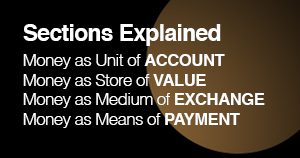Financial fraud makes for terrific stories. ‘When Genius Failed’, ‘The Smartest Guys in the Room’, ‘Devil Take the Hindmost’ and ‘Manias, Panics and Crashes’ are some of the classics of the genre.
The quality of the narratives reflects the fact that fraud is a complex subject, one that goes much deeper than headlines of bad guys exploiting the innocent.
According to Dan Davies, author of ‘Lying for Money’, that’s because fraud is unique among crimes: it has a problem of denial as well as one of detection.
“There are few other criminal acts where the victim not only consents to the criminal act, but voluntarily transfers the money or valuable goods to the criminal,” Davies writes.
Davies reaches the uncomfortable conclusion that the ideal level of financial fraud cannot be zero.
“Fraud is an equilibrium quantity,” he says.
“We can’t check up on everything, and we can’t check up on nothing. So one of the key questions that an economy has to make is how much effort to spend on checking.”
Now cryptocurrencies—which combine pseudonymity for their users with a completely public transaction record—pose intriguing new challenges when it comes to striking that balance.
Cryptocurrency fraudsters get creative
According to Chainalysis, the blockchain investigations firm, crypto-related crime rose 300 percent last year, reaching $11.5bn-worth of cryptocurrency transactions.
Of the types of cryptocurrency-related crime it studied, which included blackmail, hacks and terrorist financing, scams stood out as the most lucrative for the perpetrators, Chainalysis said in an 83-page ‘Crypto Crime Report’, published on January 29.
Heading the rankings, one single 2019 Ponzi scheme, called ‘PlusToken’, collected over $2bn last year from its 3 million-plus victims, most of whom live in China, Korea and Japan.
PlusToken sold itself as a cryptocurrency wallet that would reward users with high rates of return if they bought a new token called ‘PLUS’ using bitcoin or ethereum, the two most widely traded cryptocurrencies.
The fraudsters said the returns it promised would be generated by ‘exchange profit, mining income, and referral benefits’, cleverly combining two tried and tested sources of cryptocurrency revenue with a pyramid selling approach.
“Leo and Prince Charles had intimate talks on how the blockchain serves economic society”
The PlusToken scammers were creative in other ways.
According to Chainalysis, they provided beginner-level materials to teach users how to purchase their first bitcoin, used public groups on Chinese social media giant WeChat to spread the word, and projected the image of a legitimate cryptocurrency start-up by allowing users to see the ‘employees’ behind the company.
One of these employees even got to meet the UK’s Prince Charles at a charity event held in Seoul early last year.
“[The PlusToken Exchange’s] Co-founder Leo and Prince Charles had intimate talks on how the blockchain serves economic society,” PlusToken said in a February 2019 press release.
PlusToken’s ‘Leo’ with the UK’s Prince Charles

Ironically, the press release was disseminated by Business Wire, which is owned by Warren Buffett’s Berkshire Hathaway company.
Buffett, a long-standing critic of cryptocurrencies, has called bitcoin ‘rat poison squared’ and a ‘gambling device’ that is connected with ‘a lot of frauds’.
The solution as well as the tool
But as well as offering a new vehicle for financial fraud, cryptocurrencies may also be a key to unmasking it.
That’s because the openness of public networks like bitcoin and ethereum enables investigators like those at Chainalysis to trace the movement of the money raised by scams like that of PlusToken.
PlusToken, says Chainalysis, has so far cashed out around 25,000 ($237m) of the 45,000 bitcoin ($426m) it stole.
To do so, it has relied on the services of over-the-counter brokers, many of whom are subject to less stringent ‘know your customer’ (KYC) requirements than cryptocurrency exchanges.
“Some OTC brokers have significantly lower KYC requirements than exchanges, which can make them attractive for criminals like the PlusToken scammers,” Chainalysis said in its report.
“While many [OTC brokers] are legitimate, others take advantage of lower KYC requirements to offer service to users with illicit funds. Some even specialise in the movement and laundering of criminal money.”
But cashing in the remaining 20,000 bitcoin (worth $190m) has so far proved tougher for the scammers.
“The other 20,000 bitcoins are currently spread out across more than 8,700 cryptocurrency addresses, which speaks to the high level of effort the scammers put into obfuscating the movement of funds,” Chainalysis said.
“The scammers have transferred the bitcoin more than 24,000 times, using more than 71,000 different addresses—and that’s not even counting cash outs or transfers to off-ramps such as exchanges,” it added.
“Many of those transactions were conducted through mixers like Wasabi wallet, which utilises the CoinJoin protocol to make it more difficult to trace the path of funds,” the firm said.
How PlusToken scammers moved their stolen bitcoin

Source: Chainalysis
Anecdotal evidence suggests cryptocurrency exchanges have recently started to make it much harder to shift bitcoin to and from mixer wallets.
End of long firm frauds?
But if cryptocurrency enables new types of fraud, other long-standing criminal schemes may no longer work in a digital money world.
For decades, one of the classic templates for financial fraud has been to intentionally run up a lot of credit, then to default on it, a technique called a ‘long firm’.
“Everyone gets one free shot at a long firm”
Leslie Payne, a con-man who worked for the notorious London crime syndicate, the Krays, during the 1960s, was a specialist in long firm frauds, and even wrote a book about how to conduct them. His conclusion was surprisingly democratic.
“Everyone gets one free shot at a long firm,” Payne said.
Long firm frauds may involve outright lies to creditors, such as those perpetrated by the Krays, whose victims didn’t dare complain.
But they may also arise from dodgy, over-optimistic corporate accounting, the type committed by Enron in the run-up to its 2001 bankruptcy.
“Enron would account up front for revenues that it merely hoped to earn,” Dan Davies writes in ‘Lying for Money’.
“Other scammers may try to imitate PlusToken’s brazen strategy”
And it’s here that cryptocurrency may offer advantages to those trying to combat scams.
“We’re not trying to drum up negative stories or to fear-monger with our crypto crime report,” Maddie Kennedy, director of communications at Chainalysis, told New Money Review.
“We’re pointing out that we can start to quantify and investigate financial crime on the blockchain in a way that would not be possible in the traditional fiat currency world. Blockchain is inherently transparent and that’s one of the benefits of cryptocurrency.”
But Chainalysis isn’t complacent. It warns of further ingenuity from those seeking to use cryptocurrency in nefarious ways.
“Law enforcement agencies and regulators should be on the lookout from now on, as other scammers may try to imitate PlusToken’s brazen strategy,” the firm writes in its new report.
Don’t miss any more New Money Review content: sign up here for our newsletter









